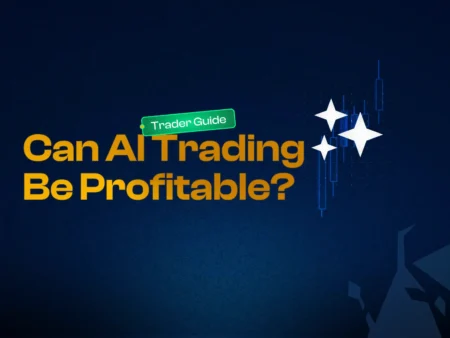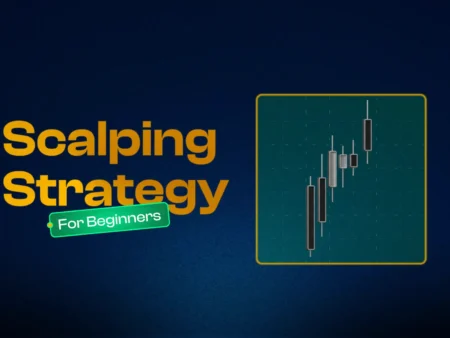Have you ever entered a forex trade that stopped you out before reversing into your targeted take profit? Unfortunately, this is a common experience among retail traders and is often due to forex market manipulation. This manipulation can lead to margin calls unless you understand how the forex market works. Stop hunts happen for several reasons, but who are the players behind the scenes? In this article, we’ll take a deeper look at forex market manipulation and how it operates.
How Market Makers Manipulate the Forex Market
In the forex market, every trade must have a buyer and a seller. Each order is paired with a counterparty on the other side of the trade. If there’s no willing counterparty, there’s no trade—it’s that simple!
Consider a scenario where a major European corporation needs to pay $15 billion for a U.S. company. A currency broker or large bank handles the conversion in the foreign exchange interbank market, converting the company’s Euros into U.S. dollars. The broker aims to get the best price for the client, earning a fee based on the average fill rate. But due to the sheer size of the transaction, the trader can’t dump the entire amount at once.
Instead, the trader breaks the position into smaller lots, executing the order by selling into buying pressure. This method keeps other market participants unaware of the larger transaction, allowing market makers to maintain their advantage.
What Market Makers Hide: The Truth About Forex Stop Hunts
Market makers often manipulate smaller retail traders into entering the market in the wrong direction. They drive the price to levels where clusters of stop orders are triggered. Once the price reaches these levels, institutional traders, also known as market makers, execute their trades. This frequently occurs after a failed breakout of previous highs or lows.
As the price reverses, it falls rapidly, stopping out small retail traders who followed the breakout. This process is a form of forex market manipulation that happens regularly in the forex market, causing many traders to lose their positions.
How Forex Market Manipulation Works: A Step-by-Step Breakdown
Imagine sellers entering the market after an extended rally, causing a pullback. Smart money then bids the market back to the previous highs, encouraging retail traders to go long on a breakout.
As these retail traders enter long positions, the price quickly reverses. When sell orders hit the market, the price drops, trapping the late buyers. Existing long positions are liquidated, and the market dips below previous support levels, catching breakout traders off guard. This triggers buy stops, driving the price back to the top of the range, where institutional sellers are waiting.
Though the market briefly trades above the previous range highs, it fails to sustain the momentum. During this time, institutional sellers complete their trades, causing a sell imbalance. The result is a sharp sell-off as the market begins to trade lower.
How to Spot and Avoid Forex Market Manipulation: Tips for Traders
Detecting forex market manipulation requires a keen understanding of price movements and market dynamics. Here are some methods and tips to help identify and protect yourself from manipulation:

1. Watch for Stop Hunts
One of the most common tactics used by market makers is the stop hunt. This occurs when the price briefly spikes above resistance or below support, triggering stop-loss orders. Once these orders are executed, the price reverses in the intended direction of the market makers. To spot this, look for sudden and sharp price movements, followed by a quick reversal.
2. Monitor Price Action Around Key Levels
Forex market manipulation often takes place around major support and resistance levels. These areas tend to attract retail traders who place stop-loss orders just above or below these levels. Watch how the price behaves at these key zones—if there are sudden spikes in price with no substantial news or economic data, it could indicate manipulation.
3. Track Volume
Anomalies in trading volume can signal manipulation. When there is an unusual increase in volume without any major market news, this can be a red flag. Manipulative moves are often accompanied by high volume in one direction, followed by a price reversal as market makers take advantage of liquidity.
4. Beware of News Trading
Manipulation is often more common around major economic news releases. Institutional traders may drive the price in one direction, only to quickly reverse it after retail traders are caught on the wrong side of the trade. It’s important to be cautious during news events and watch for price movements that don’t align with the actual news outcomes. To stay informed, always keep an eye on the economic calendar and upcoming events. Know how to read the economic calendar in a comprehensive way.
5. Follow Institutional Orders (Smart Money)
Retail traders tend to follow breakout patterns, while institutional traders (also known as smart money) typically fade those moves. By analyzing larger positions or following tools that track institutional order flow, you can gain insights into potential manipulation before it occurs.
6. Study False Breakouts
A classic sign of manipulation is the false breakout. This is when the price moves beyond a key level, enticing traders to jump in, only to reverse immediately. Be suspicious of breakouts that lack follow-through or momentum, as they may be traps set by market makers.
7. Use Trading Indicators
Tools like the Relative Strength Index (RSI) or Moving Average Convergence Divergence (MACD) can help detect manipulation. For example, if the price makes a new high, but the RSI doesn’t confirm the move, it could signal a false breakout or manipulation in the market.
Wrapping Up
Forex market manipulation happens every day and is a big reason why many retail traders lose money. Learning to spot tactics like stop hunts and fake breakouts is essential for becoming a better trader. While it takes time to develop this skill, it’s worth the effort. By understanding how market makers work and using strategies to identify manipulation, you can protect yourself from losses and make smarter trading decisions. The key is to stay informed, be patient, and continue improving your ability to navigate these tricky market conditions. Happy Trading!




